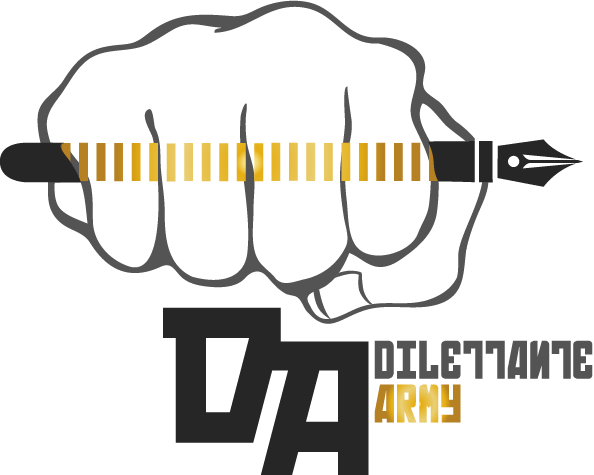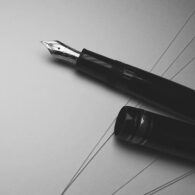Notes on Ekphrasis
How do you know when you’ve really seen something? Beleaguered by the 24-hour news cycle and endless scrolling, we are overwhelmed with images, so many that we see each one only for a moment, flashing by but never captured. This flood introduces an anxiety about what’s real. Vision, for people who have sight, is the way that we verify something: “I have seen this thing with my own eyes.” But laying eyes on something is not itself sufficient for verification if we don’t know what we’ve seen. The latest AI nightmare, the sketchily provenanced war photograph, the doctored image of “gang tattoos” that seem to prove someone’s allegiances—we’ve all seen these things, but only some of us (or perhaps none of us) have understood them.
Calls to pay close attention to images are proliferating, with thinkers like Anna Kornbluh, Anne Duformantelle, and Jonathan Crary echoing a refrain from now-classic scholars of visual culture like W.J.T. Mitchell, T.J. Clark, and John Berger. They theorize our fear that we are so stupified by a daily barrage of images that we are more and more apt to accept them at face value. A lack of time and space to interpret images factors into our vulnerability to misinformation and a decline in media literacy, conditions with profound social consequences. If we see the same things but cannot agree on a shared reality, where has the visual mechanism failed?
We believe that ekphrasis can mitigate this crisis. Ekphrasis is the literary description of a visual phenomenon, a practice that dates back at least to the Iliad and a focus of this little magazine for almost as long. The term is most commonly applied to poetry composed in response to a work of art, but any translation of pictures into words is a mechanism for dispelling the illusion of the image’s immediacy. We tend to think of images in terms of absorptive or transporting feelings—putting those feelings into words transforms an immediate feeling into a sequential one, simply because we experience words one after another. The temporal frame of language shifts us into a different kind of critical capacity, mediating the visual experience through time. It is to compound your first impression with many long looks, to check your interpretation and check again.
This is the biggest issue we’ve ever published. The response to our open call was enthusiastic—the people who read this magazine are, we’ve discovered, really into interpretation. For a magazine about visual culture, we’ve been surprisingly tardy to offer such a capacious prompt about visual culture. This decade-long failure to read the room has been wonderfully instructive. We invited people to come prove us wrong about ekphrasis, and although we largely stand by our original provocation, what upset our assumptions was the volume of the response. Why did this call for submissions strike such a nerve?
Part of the answer has to do with the composition of our audience, but the outpouring of excellent pitches also points to something about our current moment, when interpretation seems a rare luxury, given a climate that pushes for fast action and immediate certainty. Something is wrong with judgment, and this wrongness seems fundamentally linked to the murky quality of the information environment and the tyrannical primacy of the image.
We had anticipated some topics that would index this problem. We expected people to talk about AI, as Emily Singeisen has done—it’s a technologically novel way of exploiting language, though Singeisen’s essay takes the welcome approach of contextualizing the fears and allurements of AI within some very old fantasies. We expected people to talk about the pleasures and uses of slow looking, strategies to disrupt constant scrolling, as Robby Bishop does in a thorough examination of the essayistic potential of the photobook. We expected that people might have something to say about the mythic origins of ekphrasis, as Bruce M. King does, about how the ekphrasis on the Shield of Achilles hints at the world beyond the war in which the heroes who populate the Iliad will be obsolete, a confusion summed up in Achilles’s wordless scream on the battlefield after the loss of Patroklos. Ekphrasis, as a linguistic concept, has its limits when it comes to compensating people for things that can’t be regained.
We expected someone to talk about Keats’s adoring “Ode on a Grecian Urn,” but we certainly did not expect anyone to argue that Keats wants to actually fuck the urn, as Andrew McInnes does. Nor did we expect some of the ways that people chose to define ekphrasis—Julia Alekseyeva, for instance, conceptualizes filmic ekphrasis, describing how the language of cinema can build in a metacommentary that encourages self-reflective, critical viewing. In a related vein, Lauren Camp sees Marie Tharp seeing the ocean, and it comes to matter very much who, exactly, is doing the looking. Meanwhile, Louis Shankar looks at David Wojnarowicz’s textual comments about his own work, which frame his art for an anticipated viewer. In her essay about image description and disability, Kate Nesin contends that we should reconsider the idea that words themselves can offer a primary encounter when it comes to ekphrasis. Frequently, we tend to assume that language is always second-order and cannot communicate with the same richness that the visual can. But “disability ekphrasis” upsets this order, leading with the texture and detail of words.
Krushna Dande really departs, taking on paranoiac overreading in the medium of video and its digital circulation. We are calling (and citing scholars who are also calling) for sitting with an image indefinitely. When does that become pathological? After all, the right enjoys casting any attempt to slow down enough for critique of the visual as pathological and dangerous, this in order to shut it down entirely. One way power can corrupt close-looking is by dismissing it: nothing to see here. No point in taking time with an image because what you see is what you get; no point in taking time with an image because it’s impossible to understand or is always already false evidence. Another way power can corrupt close-looking is by creating the conditions for the bad kind of paranoid reading, which encourages things like racial profiling or constant hypervigilance, like the idea that you can tell whether someone is “guilty” or “innocent” by some micro-gesture or -expression you think you’re picking up, a rigid system of red flags and green flags that distorts reality to fit fantasy and fear. What these enabling tactics share—not-reading and overreading alike—is a tendency to valorize overcertainty, shame doubt, and obscure opportunities to reason well and to be discerning about what qualifies as a fact. Krushna’s piece is the one most clearly addressed to the effects of misreading.
This issue is illustrated by sign painter Kenji Nakayama, who has selected phrases from each ekphrasis and (mis)placed them back in the visual register, drawing out the character of each set of alphabetic characters through shape, line, and composition. Pictures into words into pictures again.
By shifting registers, ekphrasis requires a type of aesthetic judgment not always accomplished through the visual. It is a machine for realizing that we are all capable of misreadings. It also reminds us of our own capacity to read well, a capacity vital in a world drowned in images and over-conviction. Your reading may or may not be better than the last one, but it also isn’t the final one (which is both an admonition and a comfort).



Dilettante Mail
Get updates from us a few times a year.